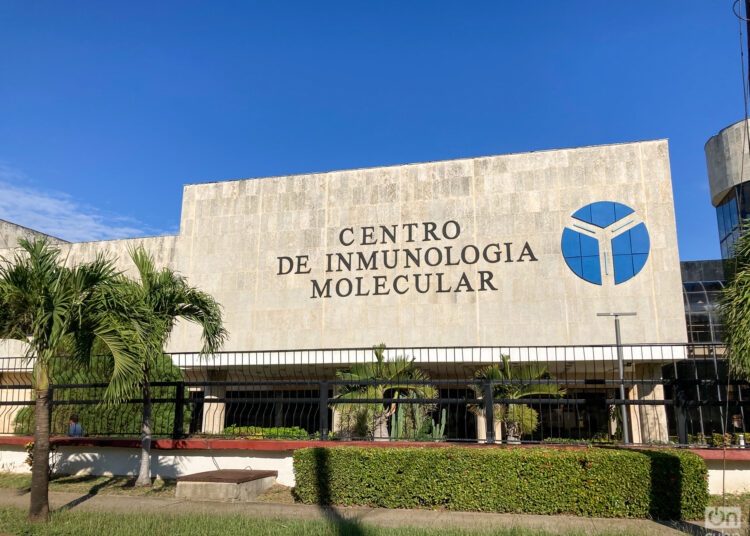On April 18, Granma newspaper published an article about a clinical trial in patients with solid tumors involving a new drug: non-alpha IL-2 Mutein. The study is being conducted at the Hermanos Ameijeiras Clinical and Surgical Hospital in Havana. According to Dr. Vilma Fleites Calvo, an oncology specialist at the aforementioned institution, positive results have been obtained so far.
The Granma article clarifies that the ongoing research aims to “verify the safety and efficacy of an escalating dose” of the drug, obtained at the Center for Molecular Immunology (CIM). The patients participating in this study are in an advanced stage of their disease and have already undergone other treatments.
What is non-alpha IL-2 Mutein? How does this drug work? What impact might it have on cancer patients? How long is the road ahead? We will discuss these topics in this article.
History of a drug
Whenever we talk about a new drug, I like to highlight the decades of research required to achieve a scientific breakthrough, the fruit of the work of a team of extremely talented and dedicated people. This case is no exception.
The first reference to the product currently being studied at the Hermanos Ameijeiras Hospital is the patent application filed in June 2011 with the World Intellectual Property Organization. It was conducted by the CIM and a group of researchers led by Dr. Kalet León Monzón.
Of course, the patent did not refer to the finished product, but to a group of polypeptides with immunomodulatory properties derived from interleukin 2 (IL-2), developed for use in the treatment of cancer and chronic infections. Polypeptides are molecules composed of amino acids, which are the substances that make up proteins. On the other hand, the fact that they have “immunomodulatory properties” means that they are capable of acting on the immune system, modifying its activity for the benefit of patients.
To fully understand what we are talking about, we must refer to IL-2. It is a protein produced by T lymphocytes, which are the body’s defensive cells and whose function is to increase the production and activity of this same cell group.
According to a specialized article, IL-2 was discovered in 1976 and named “T cell growth factor.” This molecule is composed of three chains, named alpha, beta, and gamma. These chains function as arms that connect with receptors on the membrane of immune cells, initiating a set of cellular response mechanisms on which their function depends.
IL-2 was approved in 1992 for the treatment of metastatic renal cell carcinoma, an aggressive type of cancer that affects the kidneys, and then, in 1998, for metastatic melanoma, a skin cancer. However, its effects, although positive in some cases, did not meet the expectations of the scientific community.
According to an article published in the journal Anales de la Academia de Ciencias de Cuba, patients with renal and epithelial carcinomas only benefit in 15 to 30% of cases. This is because IL-2, in addition to enhancing the action of effector lymphocytes — which have strictly defensive functions — also activates regulatory lymphocytes, whose main function is to limit the activity of the former. In other words, it would be like simultaneously turning the immune system on and off in a cancer patient.
Additionally, the drug’s safety profile is poor, as the adverse effects are intense and, in many cases, require discontinuation of treatment. This was the motivation of the Cuban research team when developing this group of candidate substances: to achieve a drug that combines safety and effectiveness for the treatment of various oncological pathologies.
Non-alpha IL-2 mutein
A key element in the functioning of this molecule is the different degree of affinity of the alpha, beta and gamma chains with the different types of T lymphocytes. It is known that the alpha chains induce the activation and proliferation of regulatory lymphocytes, while the beta and gamma chains act preferentially on effector lymphocytes, that is, those that act directly against cancer cells and infectious agents.
What did the Cuban researchers do? Using bioinformatics techniques, they developed a series of candidates and then determined which one was best suited to becoming a drug.
Why is it called a “mutein”? Because during the production process, a mutation was induced in the DNA chain of the genes that encode the “wild protein,” that is, the IL-2 that we all have in our bodies. In this case, the DNA sequence was modified in four locations, resulting in a molecule that retained most of its structure but was sufficiently distinct from the original to acquire new properties. This was explained in an article published in June 2013 in The Journal of Immunology.
The mutations were concentrated in the alpha chain, resulting in a lower affinity of regulatory T cell (Treg) receptors for the mutein, compared to wild-type IL-2 (IL-2S), hence its name “non-alpha.” In contrast, in another experiment, the non-alpha IL-2 mutein showed similar behavior to IL-2S in activating effector T cells.
Later, the antimetastatic effect of the mutein was evaluated in experimental mice, and its effect was found to be superior to that of IL-2S. This result was repeated in other experimental models, reinforcing the conviction of the usefulness of this drug. Finally, the safety of the mutein was compared with IL-2S, and it was observed that it induced far fewer adverse effects in treated mice.
The hypothesis that this effect was due to the non-alpha mutein’s ability to alter the ratio of effector and regulatory lymphocytes was confirmed in a new study published in 2022 in the journal Frontiers in Immunology. In this case, equal doses of mutein and IL-2S were used, and it was found that mice treated with mutein had 23% more effector T cells than those treated with IL-2S. In contrast, Treg levels increased in mice that received IL-2S.
Other encouraging results of this study were the demonstration that the mutein is capable of reducing tumor growth, decreasing metastatic activity, and improving survival in mice with cancer.
A long road ahead
With all of the above, the doors were open for the next phase of research: testing the mutein in humans. And that’s where it is currently at.
From a rational standpoint, it seems logical to assume that this drug will offer good results in terms of its ability to reduce tumor and metastatic activity. Furthermore, it is expected to have a favorable safety profile, with few adverse reactions, which would allow its use in a large number of patients.
However, all of this remains to be proven. The non-alpha mutein still has a long way to go, during which it will have to confirm whether the expectations placed on it are met. We will have to wait for new results to be published. Although work on this product has been going on for more than fifteen years, it would not be unreasonable to assume that in no less than five years it could be submitted for approval by the Cuban regulatory agency and the other 16 countries where CIM holds its patent. That’s how science works.










